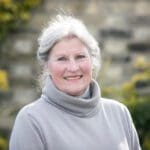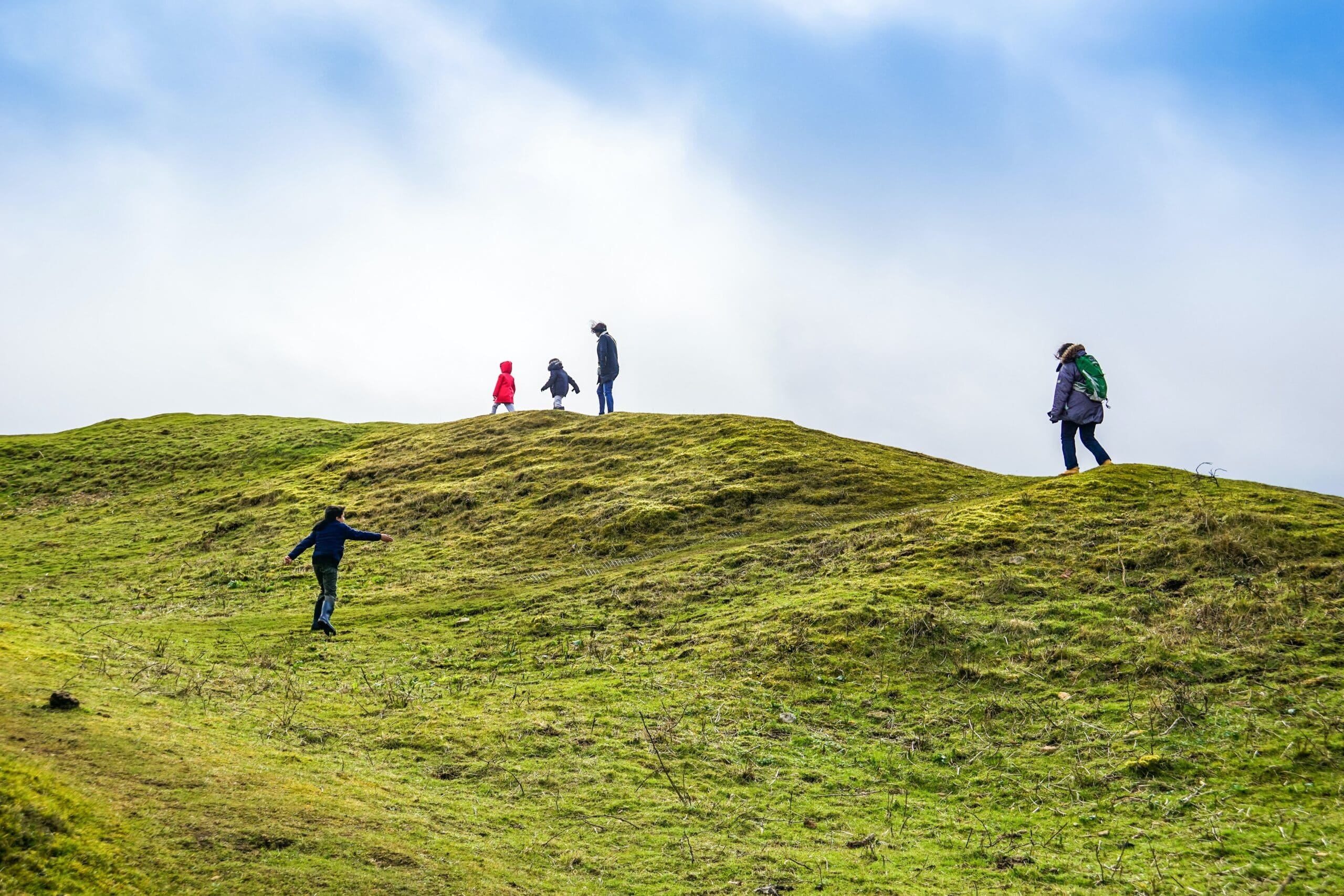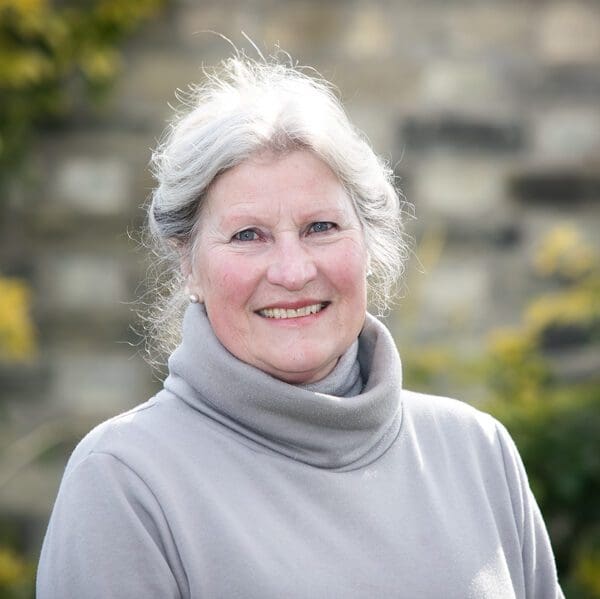I
In the mid-1970s the Parents National Education Union offices in London closed. Founded in 1890 to support parents and schools in implementing the educational ideas of Charlotte Mason, the Parents National Education Union had been turned over to business-minded trustees who planned to get it up to date. To them, the union was hopelessly Edwardian and far past its sell-by date. Boxes of books, cartloads of curricula, and decades of documents were thrown outside into a waiting skip (British for dumpster).
Hearing of the divestment, L’Abri leaders Susan Schaeffer Macaulay and Ranald Macaulay, both of whom had benefited from a Charlotte Mason education for their children, went to London to collect as much as could be saved. Susan was mocked by the staff: “Why would a young woman like you be interested in this?” Unbeknownst to any of them, while the dumpster marked the end of an era, it invited a new, more diverse team of gardeners to cultivate the soil of fresh fields, leading eventually to today’s global interest in ideas first sown in England by Charlotte Mason through a series of lectures in the mid-1880s.
At the time of her death in 1923, over one hundred schools in the UK and many homeschool classrooms around the world followed Mason’s design for education. But according to journalist Amy Landreth, by the 1960s only about sixty schools worldwide practiced Mason’s ideas. Fearful that languishing interest would lead to historical erasure altogether, Schaeffer Macaulay compiled her London dumpster finds and wrote For the Children’s Sake: Foundations of Education for Home and School. Published in 1984 and not once out of print since, the book became the catalyst for the renewal of Charlotte Mason’s educational ideas. To be sure, the book was slow to capture the imagination of the educational establishment, but it offered a compelling vision for the handful of schools prepared to be countercultural. Yet it was across the pond that the book made its most significant impact, finding ever-increasing appeal and firmly taking root within a newly emerging movement of North American parents. Many of them were well-educated and in search of a more rigorous home-based education for their own children than what was on offer in their communities. Most, too, were Christian and disenfranchised by the increasingly standardized and secularized version of education in neighbourhood public schools. The treasure in the skip, nearly lost and almost forgotten, became a lifeline for parents who knew something better was possible for the education of their children.
Mason had been eulogized in her March 1923 memorial service in St. Martin-in-the-Fields in London by children, mothers, teachers, neighbours, university professors, inspectors of education, headmasters of famous schools, members of the aristocracy, the great and the good. The Times newspaper in its January 17, 1923, obituary stated that “her personal influence was probably more widespread than that of any educationist of her time. The loyalty which she inspired was more than could be accounted for by the mere weight and force of her educational philosophy.” Described as a “pioneer of sane education,” each delegate spoke of Mason’s extraordinary character and vision, her faith and courage, her wit and wisdom, and her keen interest in contemporary life.
Yet if she was so remarkable and her achievements so admired, why, by the 1970s, had she been relegated to the skip?
An Education for All
Mason’s early life had been isolated and lonely. Initially home-educated by her parents, an elderly father and much younger mother, she was later orphaned at sixteen. Two years on, in 1860, she gained a scholarship to one of the few teacher-training colleges for women in London, the Home and Colonial. Despite difficult health circumstances, she taught and managed schools, lectured at the newly opened Bishop Otter Memorial College for Gentlewomen, walked through the English counties on foot, wrote a “bestseller” guidebook titled The Forty Shires: Their History, Scenery, Arts, and Legends, and helped some old college friends with their schools in the north of England.
It was here that Mason embarked on a new trajectory of writing and speaking on education. In Bradford in 1885–86 she delivered a set of eight lectures covering the essential ideas of her educational philosophy and practice. These were so well received that she was encouraged to publish them as a book. The first volume of what would become a six-part series of educational books was published and titled Home Education. Her ideas attracted leading thinkers and influential families of means who supported her work and enabled it to grow. Though questioning the education on offer in state, church, and private schools, Mason nevertheless engaged with many officials in the educational hierarchy of her time, trying to present them with an ennobling vision of education rather than the narrow, utilitarian practices then prevalent. The vibrant and fast-changing Victorian society of Mason’s day had been shaped by Enlightenment skepticism, biblical criticism, and the emerging sciences. Although these new intellectual movements were displacing the religious certainties of Victorian culture, society was still sufficiently unfragmented to allow scholars and thinkers to hold big-picture views of their subjects and times. Mason did the same but continued to engage with the secularizing trends, while tethering her key ideas and practices in education to a deep conviction of the truth of Christianity.
The treasure in the skip, nearly lost and almost forgotten, became a lifeline for parents who knew something better was possible for the education of their children.
When Mason opened her House of Education, Scale How, in the Lake District in 1895, she initially set out to improve the training of governesses and mothers who taught in the many homeschool rooms across the country and beyond. The Mother’s Education Course, introduced to help them better direct the education of children at home, had an ambitious curriculum and continued usefully for twenty-three years. This project came to an end with World War I, a time when mothers had no leisure for study. Many had to drop out. Mason intentionally did not aim at recruiting the “blue stocking” young women who were seriously academic and ambitious in fighting for an education equal with men in the universities. She appealed instead to middle- and upper-middle-class women who had the “child hunger” to take the training and who could then enter the satisfying world of school and home as missionaries for her educational gospel. Such women were dissatisfied with the limited educational opportunities available to them professionally. Bored with being “ornaments” stranded in family homes with insufficient purposeful work and unable to support themselves, these women found Mason’s educational ideas truly life-giving and, thus, very attractive.
The House of Education was to be a beacon on the hill where “plain living and high thinking” was the order of the day. It was robustly ascetic. Mason would not accept that greater comforts were necessary, especially after the lean war years. Students managed with oil lamps in shared bedrooms and jugs of cold water for daily washing, very much in line with the “improving” and spartan spirit of the day. While most endured cheerfully, not all found it desirable. The finances of the college were always precarious and a large factor in the institution’s final demise, yet they were nevertheless carefully managed. Even with meagre coffers, hospitality was prioritized and offered to many important external visitors, including G.K. Chesterton, who married an alumnus, Frances Alice Blogg. The college continued to be highly respected but was ultimately unable to meet the demands of increased professionalization and standardization of postwar education. The House of Education was finally subsumed into the state in 1960.
Hospitality extended well beyond the buildings, however. Indeed, Mason’s vision began by prioritizing respect for all children despite the class-bound Victorian hierarchies of her time. This was codified in her foundational principle: “Children are born persons: not machines, not animals, not accidental conglomerations of cells, but persons, with all the magnificent possibilities that personhood implies.” This was a radical statement in Mason’s context. Most philanthropists worked with the grain of the existing economic, social, and political structures; they had no desire to upset the social order, and fear of the “dangerous” lower classes was rife. A key part of Mason’s educational mission was to bring treasures into the poorest schools of the country and to the most neglected of children. She wanted to provide the opportunity for all children to step into the large room of knowledge by reading “living books,” encountering great art and music, and forming close relationships with the natural world around them. If education was the “science of relations,” as Mason claimed, then the best education would be designed around inviting all children into relationship with God, with humans, and with the universe. An education worthy of a child’s full personhood would welcome them to know the plants, animals, insects, fish, and birds that lived and grew within a mile of home and school: “The child would be taken daily, if possible, to scenes—moor or meadow, park, common, or shore—where he may find new things to examine, and so add to his store of real knowledge.” In contrast to elitist forms of education reserved for the privileged few, Mason wanted to elevate souls above depressing social conditions. Dominant cultural norms and educational policies be damned.
Mason saw the home as vital in cultivating more life-giving forms of life and culture. The home, at its best, could provide an atmosphere of curiosity and joy through the relationality intrinsic to a rich and complex domestic life.
It might be obvious by this point, but Mason’s theory of social renewal was not bound up with traditional mechanisms of power. Instead, Mason saw the home as vital in cultivating more life-giving forms of life and culture. The home, at its best, could provide an atmosphere of curiosity and joy through the relationality intrinsic to a rich and complex domestic life. In such a home, there could be the best of educations.
As mentioned, books read, for Mason, should be “living books.” Such books were to be understood relationally, with a priority placed on those in which the narrator was a witness if not in actual relation to the subject. Schoolbooks should tell powerful stories with a literary voice rather than the dry sawdust of predigested knowledge typical of the modern textbook. Living books, for Mason, brought life to the mind. They were “books that purl along pleasantly as a forest brook, tell you ‘all about it,’ stir your heart with the story of a great event, amuse you with pageants and show, make you intimate with great people, and friendly with the lowly.” Consider Plutarch’s telling of the story of Alexander the Great taming his horse Bucephalus: “Alexander ran to the horse, and laying hold on the bridle, turned him to the sun, for he had observed, it seems, that the shadow which fell before the horse greatly disturbed him. . . . A profound silence took place, but when the prince had turned him and brought him safe back, they all received him with loud exclamations.”
Such living books were not just histories like Plutarch’s, but also included “tales of the imagination, scenes laid in other lands and other times, heroic adventures, hairbreadth escapes, delicious fairy tales in which . . . all is impossible and they know it, and yet believe.” Children would read books that they would “live over and over, and ‘play at’ by the hour, as we have all played at Robinson Crusoe finding the footprints.” They would “have the joy of living in far lands, in other persons, in other times—a delightful double existence.” And they would play: “Vigorous healthful play, is in its turn, fully as important as lessons, as regards both bodily health and brain power.” Mason was ushering in a revolution of what a liberal education actually meant and could be—and not just for some, but for all.
An Education Worthy of Persons
While one might not share Mason’s Christian framing, many can still recognize her understanding of a child’s intrinsic value when they look at their own children. “The fact seems to be that children are like ourselves,” Mason writes, “not because they have to become so, but because they are born so.” Mason’s educational philosophy was rooted in this expansive biblical vision of an abundant human life gifted by the Creator to his creation. Because of this, she resisted more mechanical or instrumental views of education, convicted that “as a stream can rise no higher than its source, so . . . no educational effort can rise above the whole scheme that gives it birth.” From what she believed to be the loftiest vision of education and the human person, Mason embarked on a campaign called “A Liberal Education for All,” which urged schools to join a national and Christian educational mission of some urgency.
Mason’s urgency, however, was not without challengers. In 1894 Lady Margesson, an aristocratic and dominating member of the executive committee of the Parents National Education Union, criticized Mason’s leadership for not clearly defining what the union’s philosophy stood for. Margesson, keen to broaden the union’s scope to include several other educationists (such as Froebel and Montessori) under the union’s umbrella, considered herself the appropriate person to do this. Yet Mason would not concede any dilution of or addition to the aims of her educational philosophy. Mason forced a confrontation culminating in the resignations of her adversaries.
Mason stood quite apart from many educators of her day through her fundamental and challenging idea that all children were “hungry for knowledge” and wanted to know—about everything.
Nonetheless, parents and aspiring teachers paid attention to Mason. Many joined and established local chapters of the Parents National Education Union. Mason stood quite apart from many educators of her day through her fundamental and challenging idea that all children were “hungry for knowledge” and wanted to know—about everything. Mason consistently argued that children naturally loved to learn: “This is how we find children—with intelligence more acute, logic more keen, observing powers more alert, moral sensibilities more quick, love and faith and hope more abounding.” Knowledge properly understood cohered around the knowledge of God, of humankind, and of the world, which necessitated the broadest of curricula. Mason argued that “all the thought we offer to our children shall be living thought,” by which she meant content that would enliven the spirit and mind, imagination and heart of the child. The “dead thought” in so much modern education (even today) is a dreary list of facts to blindly memorize out of context. Vitalizing thought would affirm the potency of life and encourage the child to explore and discover. Teachers and parents were not considered the only fount of knowledge, pouring predigested knowledge into empty minds. Rather they were to act as guides, “hosts” presenting to children the work of the vital minds behind the best books of the past to live well and fully in the present.
Mason for the Present Moment
There is something that rings so true about Mason’s ideas and methods. Her system worked because it cohered with the nature of things, of knowledge, and of children, and this remains a large part of her evergreen appeal to parents and educators. Of course, nostalgia and thoughtless replication of her ideas are never sufficient. Society and culture are always in transition. Mason, as a Christian in the dying days of Victorian England, understood this very well, urging parents and teachers to read the signs of the times carefully.
Perhaps this valuable insight was not acted on by her immediate successors who naively assumed that her educational reforms would proliferate into the wider educational world. But Mason’s Victorian optimism and perceived idealism were insufficient to deal with the cultural changes after the wars. Changing family and household structures, the receding place of Christian thought, the relativization of truth and morality, along with the consolidation and standardization of education all seemed to offer infertile ground for the seeds of Mason’s ideas to germinate. Diversity of educational visions and programs were largely dismissed, discouraged, and ignored as governments became the main agent in the delivery of education across the Western world. After the 1920s, and especially after the 1950s, there seemed increasingly little space for an education such as the one Mason conceived.
Yet despite shifting contexts, the perennial questions remain: Who are we? How should we live? Where are we heading? And while in recent years the social contexts changed, Mason’s successors and their commitment to answering these questions have not. The past few years have witnessed astonishing growth in the seedbed of Mason’s ideas. Extensive lockdowns and school closures during the recent pandemic prompted parents, dissatisfied with what was on offer in the public educational monolith, to begin searching for approaches to education that recognize and serve the whole child. Equally dissatisfied teachers leaving their positions have also begun designing and launching alternative forms of education at an unprecedented scale. Hundreds of independent schools and learning pods opened up in Canada, America, and in many countries beyond. In the stressed conditions of pandemic pedagogy, the conditions became perfect for the life-giving seeds, planted by Mason, to germinate and bloom.
The conditions became perfect for the life-giving seeds, planted by Mason, to germinate and bloom.
Almost twenty-five years into the twenty-first century, parents and providers across the globe are weary of textbooks and the digital platforms offered in five-day-a-week schooling. They are searching for alternatives, and many have found inspiration in Mason. Her vision honours the whole child. She challenges educators to use diverse spaces, indoors and out, for learning, and to spend the limited hours of a school day differently. She encourages experience as a form of learning and working with one’s hands to make and to master. She is a champion of children better understanding the natural world so they might learn to protect our natural environment. She understands the importance of beauty and story and makes space for oracy and narration. These educational ideas and practices remain the same after more than a century, but are being retold and reinhabited by a new community in a new time period.
The largely unseen, unheralded, decades-long work of those quietly nurturing children in small fields across the world, mostly in homeschools but also in small human-scale schools, in tiny research and writing ecosystems, has maintained Mason’s ideas and reinterpreted them for a new time. Charlotte Mason education is suddenly recognized as having many of the ingredients parents and providers are seeking. This is a story of the importance of curators, caregivers, and cultivators of uncommon “seeds endowed with vital force.” When society arrives at moments of realization that a different direction and nourishment is needed, the quiet, unseen work of a faithful few caring, tilling, cultivating, studying, mixing, and fertilizing finds a day in which the seeds finally germinate and the plants begin to unfurl. The changes we seek in our societies and communities, the new institutions we would wish to build, and the little platoons living out better stories ought to be freshly thought through while remaining rooted in that unchanging revelation that inspired educationists like Charlotte Mason, whose renewed and renewing legacy lives on.





